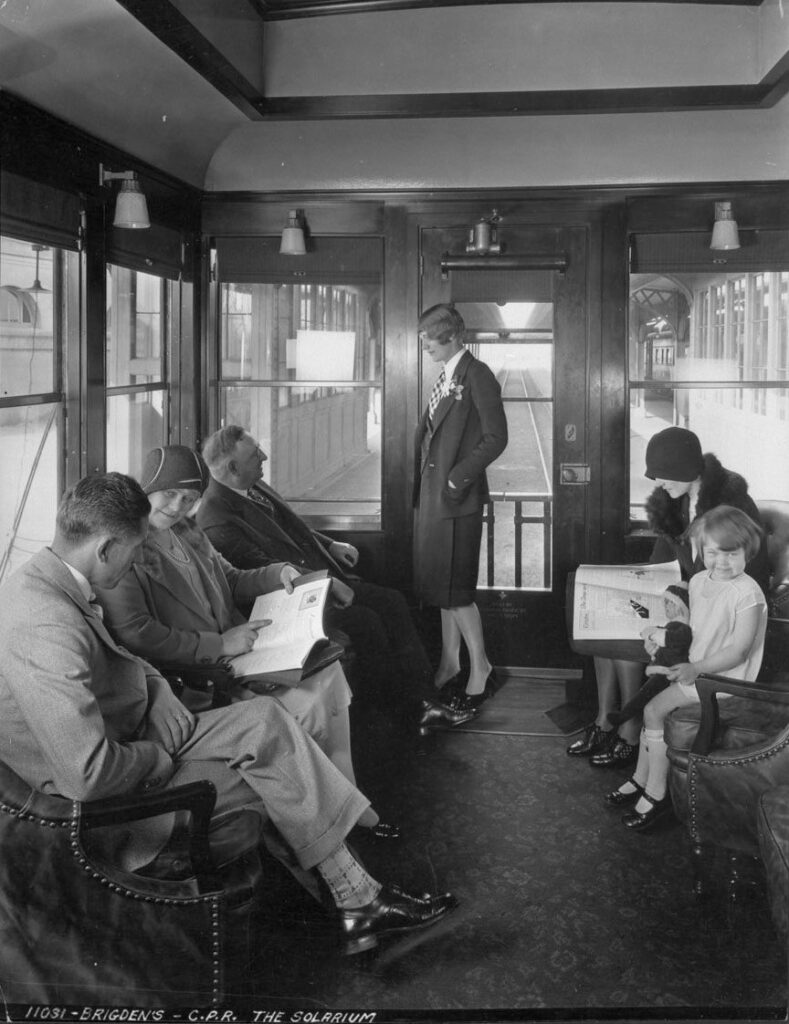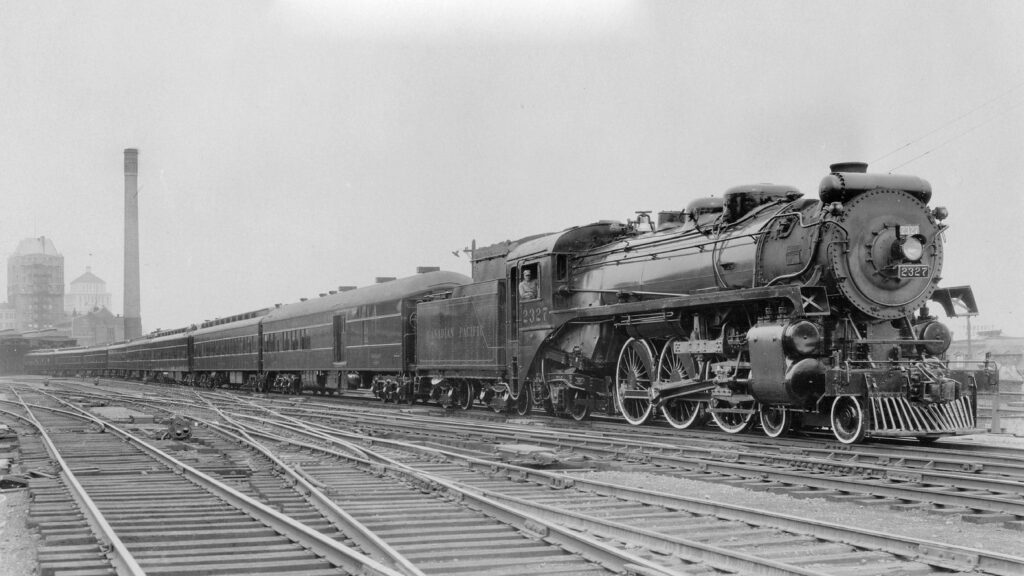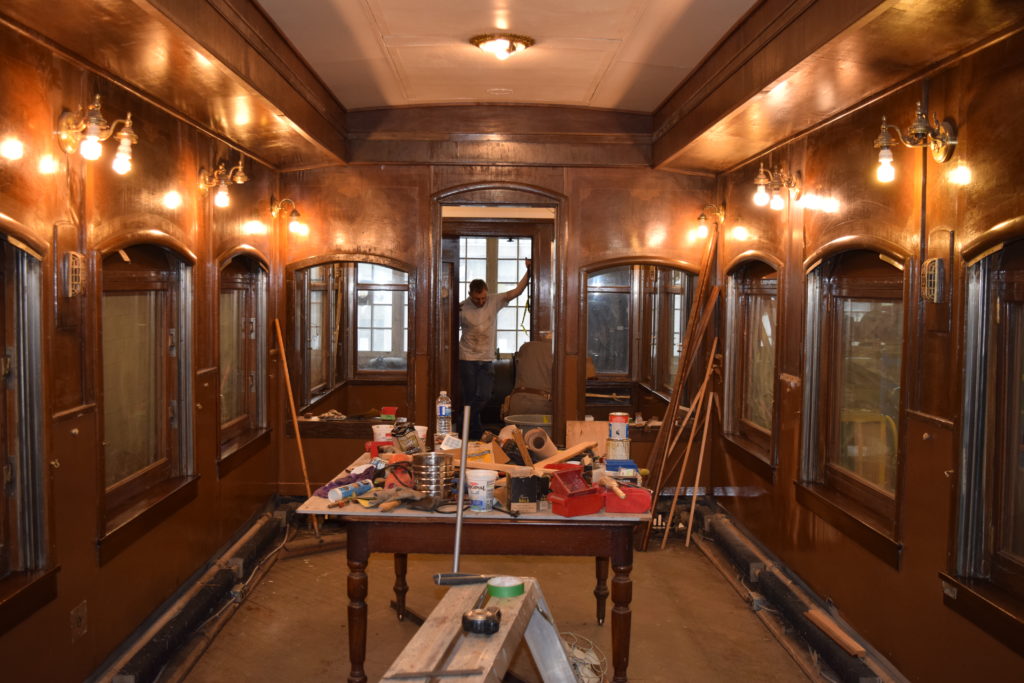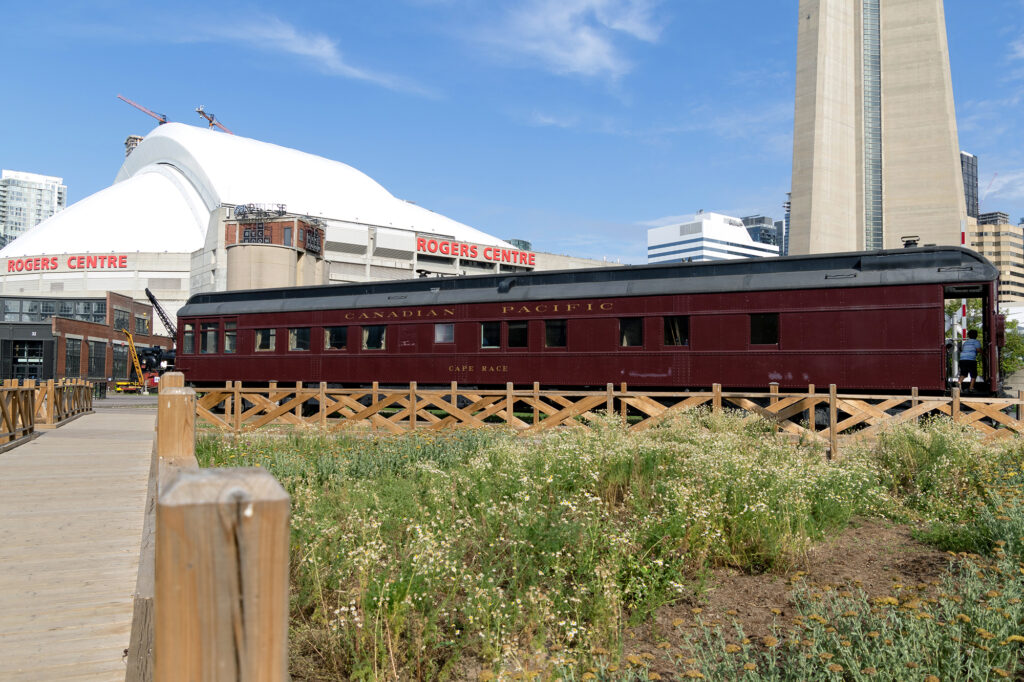Cape Race was built for the Canadian Pacific Railway in 1929 as the River Liard. The car was one of a series of 15 River cars fabricated at National Steel Car in Hamilton for $66,300 apiece. The opulent interiors were finished at CP’s Angus Shops in Montreal and featured individual ladies’s and gentlemen’s showers, leather-upholstered smoking rooms, ladies’ lounge and observation parlour as well as a small buffet to serve snacks and beverages.
Instead of the traditional open observation platform on the rear, the cars featured a high-windowed solarium furnished with eight leather chairs. In an era long before exposure to the sun’s ultra-violet rays was considered harmful, CP promoted these solarium-lounge cars with their “health-giving VITA GLASS Sun Parlors.”
The River cars were unusual in that they contained no revenue-producing space; they were completely for the comfort of passengers occupying space in other sleeping cars. The cars were built primarily for CP’s Trans-Canada Limited, an all-sleeping car train between Montreal/Toronto and Vancouver that ran in the summers only between 1929 and 1930. In the winter, the cars operated on the Toronto-Vancouver Dominion as well as other CP trains. In 1931, due to the deepening Depression, CP cancelled the Trans-Canada Limited and mothballed most of the River cars since they were too expensive to operate.
In 1941, with heavy demands on the CPR’s equipment due to World War II, the River Liard was renamed Cape Liard and was air-conditioned. The lounges and showers were taken out and replaced with revenue producing sleeping accommodation: a compartment and four double bedrooms. The car was renamed Cape Race in 1947 when Canadian Pacific decided, in a postwar mood of heightened nationalism, to rename many of their passenger cars in order to reflect a less British and more Canadian mien. Cape Race was located on the southeastern corner of Newfoundland, soon to be Canada’s newest province. In 1912, a powerful Marconi wireless receiving and transmission station was located at Cape Race and was the first to pick up distress calls from the sinking Titanic and relay them to the rest of the world. Following the renaming, Cape Race saw service on Montreal-Toronto trains and the transcontinental Dominion until that train was re-equipped with stainless steel cars in 1954.
Cape Race was converted to Business Car 13 in 1963 and used by the CP superintendent based in Kenora, Ontario. In 1969 the car was sold to the Upper Canada Railway Society. The UCRS used the car to bring up the rear of their frequent railfan excursions that operated out of Toronto. Cape Race also functioned as a clubhouse for UCRS board members while stored in Toronto yards. Over time both CN and CP became less receptive to hauling excursions, particularly with equipment that didn’t belong to them. The car had also become prohibitively expensive to maintain and operate and was retired by UCRS in the 1970s. Cape Race was moved around to various locations as the railway lands were redeveloped and finally ended up in the John Street Roundhouse, where it currently resides.
This car has been generously donated by the Upper Canada Railway Society to the City of Toronto.





